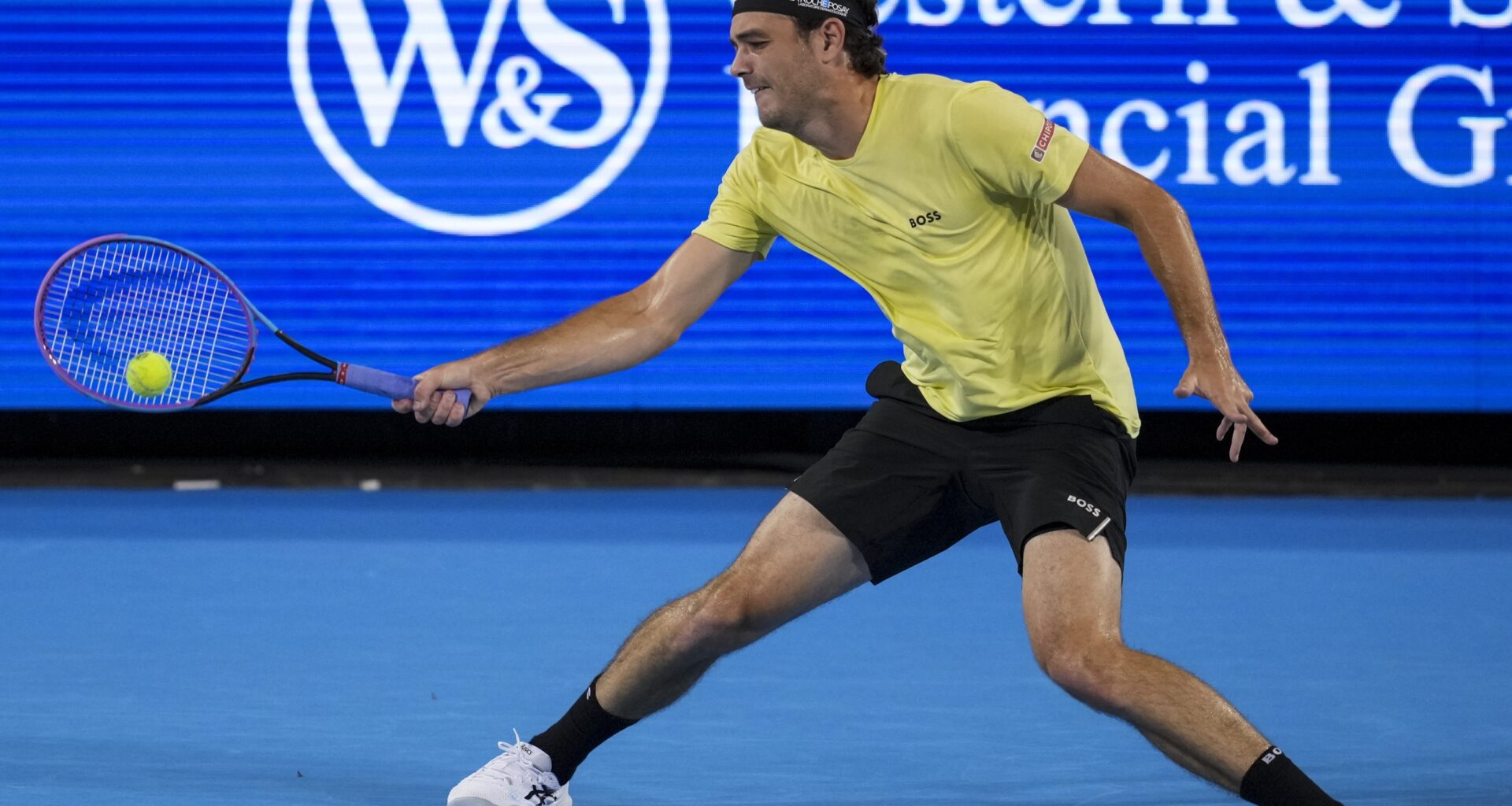Players say modern balls have become too slow, too heavy, and too inconsistent. The data and the injuries suggest they’re right. As injuries mount and rallies grow longer, a quiet crisis is reshaping men’s tennis — one that starts not with the courts, but with the balls.
A Tour Running on Empty
Listen closely to men’s tennis in 2025 and you can hear it — the dull thud of a ball that won’t travel, followed by a sigh, not from fans, but from the players themselves.
This season has been defined by fatigue: sore backs, tight hamstrings, overworked shoulders. On the surface, it’s easy to blame the usual culprits: an overcrowded calendar, too little recovery time. But according to a growing number of players, that’s not the whole story. The problem isn’t the schedule. It’s the ball.
“The Balls, Courts, Conditions Have Slowed Down”
Jack Draper was one of the first to voice his frustration, calling for a calendar that better protects players’ health. Taylor Fritz agreed, but he cut straight to the heart of the issue.
“Facts,” he wrote on X. “Balls, courts, conditions have slowed down a lot, making the weekly grind even more physically demanding.”
That sparked a debate among data-minded fans, some of whom pointed out that the Court Pace Index — tennis’s standard measure of surface speed — shows that many hard courts have actually sped up. So why does the game feel slower?
Fritz had the answer: “Balls make a much bigger difference on how fast the court plays than the actual court speed.” He cited Shanghai as an example — a tournament with a high CPI that still played sluggishly because of “slow balls.” This year, both the court and the ball were slow, creating conditions he called “brutal.”
The Illusion of Speed
It’s not just a technicality. A heavy, dead ball on a medium-fast surface doesn’t produce faster tennis — it produces longer rallies and heavier legs. The ball lingers in the air, forcing players to generate all their own pace. “Every ball except the U.S. Open Series one has been much slower and more dead than when I started my career,” Fritz said.
The effect is cumulative. Matches stretch longer. Recovery windows shrink. And the injury list keeps growing. For players like Draper and Holger Rune, both of whom have suffered serious injuries, that’s a worrying trend.
When Variety Disappears
The consequences aren’t just physical. They’re stylistic.
Tennis, at its best, thrives on contrast — the clash of big servers and counterpunchers, of power and touch. Slow, heavy balls flatten those distinctions. Big servers lose their sting. Flat hitters lose their bite. Everyone, regardless of style, is pulled into the same pattern of long, grinding rallies.
It’s not that this kind of tennis is bad. It’s when it becomes the only kind that the sport loses its unpredictability — the quick-strike winners, the short exchanges, the tactical flair.
As Fritz tells it, one testing error even turned comical. A supposedly fast ball was tested on a lightning-quick court, deemed “too fast,” and the court was slowed down in response. The result: a slow ball on a slow court. The outcome: punishing, monotonous tennis.
A Sport Out of Balance
Ironically, tennis’s pursuit of consistency has created chaos. Players now face weekly changes in how the ball feels off the strings, how high it bounces, and how quickly it dies. That constant recalibration isn’t just mental, it’s physical.
It’s no coincidence that this season has produced so many weary bodies and cautious withdrawals. The data may say “medium-fast,” but the players’ legs say otherwise.
What Needs to Change
The solution isn’t to make every surface quick again — it’s to restore balance and clarity.
Fewer ball types. The ATP uses more than a dozen different balls throughout the year. It’s like asking Formula 1 drivers to race on a new tire compound every weekend. Players can’t adjust quickly enough.
Smarter testing. Balls and courts must be tested together, not separately. The perception of speed depends on both. Shanghai proved what happens when they’re misaligned.
Listen to the players. When a consensus forms among Fritz, Draper, and Daniil Medvedev, it’s not a complaint — it’s evidence from the front lines. These are the athletes feeling the toll in real time.
A Crisis of Feel
The deeper question is what kind of sport men’s tennis wants to be. A battle of endurance, or a showcase of variety and creativity?
Right now, it’s drifting toward the former. The rallies are longer, the bodies are breaking down, and the game’s diversity is being squeezed out. The CPI might claim courts are faster, but anyone watching — or playing — knows better.
Unless something changes, the defining sound of men’s tennis won’t be the clean pop of a winner. It’ll be that dull, weary thud — and the sigh that follows it.
Main Photo Credit: Aaron Doster – Imagn Images

